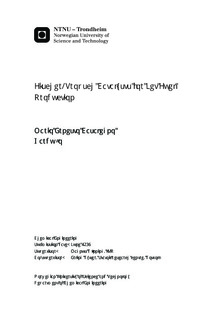Fischer-Tropsch Catalysts for Jet Fuel Production
Abstract
Diverse β-zeolite and β-zeolite/Fischer Tropsch catalysts were prepared under hydrothermal conditions to obtain a tailored jet fuel catalyst. The Fischer Tropsch catalyst that was employed is cobalt-based and it was provided by Statoil Research Center at Rotvoll. A sample of pure β-zeolite was synthesized to obtain a reference product.
The hydrothermal synthesis of the β-zeolite and β-zeolite/Fischer catalyst was performed at 155 °C. It was decided to elaborate the bifunctional catalyst to obtain jet fuel products with β-zeolite because this zeolite type posses larger micropores than other zeolites. The initial chemical components of the β-zeolite/Fischer catalyst were: silicon source, aluminum source, organic template, water, and Fischer Tropsch cobalt based catalyst.
Especial attention was paid to the silicon source because is well known that a few ppm s of sodium could affect negatively the performance of the Fischer Tropsch cobalt-based catalyst. It was concluded that fumed silica possess the best trade-off qualities between purity and price to perform large a number of hydrothermal synthesis.
Different procedures were used to modify the final hydrothermal β-zeolite/Fischer catalyst. The most successful was the impregnation of the internal pores of the Fischer Tropsch cobalt-based catalyst alumina support with the organic template.
Prior to the Fischer Tropsch synthesis test, all the produced β-zeolite/Fischer catalyst were characterized. The BET method was utilized to measure the surface area, pore volume, and pore size. XRD powder patterns were used to verify the presence of the β-zeolite and also to prove that the calcination at 550°C did not damage the Fischer Tropsch cobalt based catalyst. SEM was employed as a qualitative technique to confirm the presence of the β-zeolite in the Fischer Tropsch catalyst surface. Chemisorption was used to determine the metal dispersion and the cobalt crystal size.
Several bifunctional catalyst were tested in the Fischer Tropsch synthesis. The results show that a higher quantity of β-zeolite in the β-zeolite/Fischer Tropsch catalyst produces elevated amounts of methane and decreases the production of C₅+ products. Comparing the resulting products of the pure Fischer Tropsch catalyst with the ones of the β-zeolite/Fischer catalyst, the final amount of C₃ to C₆ products remain in the same values. However, the remarkable change is the olefin/paraffin ratio; which is affected by the β-zeolite presence, decreasing the olefin percentage. A linear correlation between methane and C₅+ was found.
